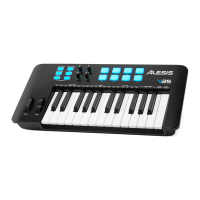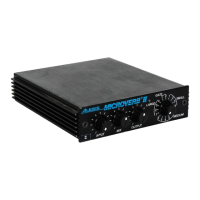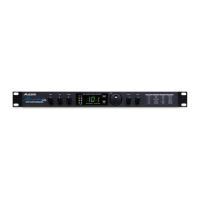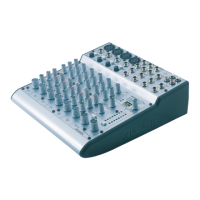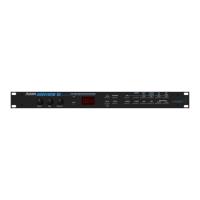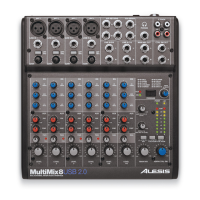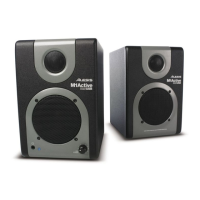Chapter 4
ALESIS ML-9600 REFERENCE MANUAL 17
Figure 4.6.2
Delete Track Confirmation
where "Song 01" is the name of the Track to be deleted. Pressing UP/YES will remove that Track from
the playlist, moving the next Track in the playlist in its place. Pressing DOWN/NO will cancel the
operation and return the unit to its previous state.
NOTE: Deleting a Track from a playlist does not delete the audio samples from the hard disk. The
audio remains on the disk in an "Audio File"; see section 4.7 for more details.
4.6E CHANGING TRACK ORDER
Once multiple Tracks have been recorded into a playlist, it may be desirable to re-order the Tracks. This
is accomplished very easily by the use of the TRACK MOVE button. First, use the SKIP buttons to
select the Track you want to move. Pressing TRACK MOVE will bring up the Track Move display, as
illustrated in Figure 4.6.3.
Figure 4.6.3
Track Move Display
In this display, the second line of the 2X16 display changes to show "Move (source track) >
(destination track)". The cursor will be under the destination Track, and the source Track will be
the number of the Track you have currently selected. Pressing the UP/YES and DOWN/NO keys will
scroll through the possible destination Track numbers. Once the destination Track number has been
selected, pressing TRACK MOVE again will cause the display to prompt "Are You Sure?". Pressing
UP/YES will complete the move, while pressing DOWN/NO will cancel the operation and return the
unit to its previous state.
4.7 TRACKS VS. AUDIO FILES
The ML-9600 organizes audio data into two types: Tracks and Audio Files. An Audio File is audio that
has been recorded to the hard disk; it is stored as a unique "file" on the disk. A Track is a "placeholder"
in a playlist that "points" to an audio file. All Tracks have corresponding Audio Files. All Audio Files
do not necessarily have corresponding Tracks; it is possible to have an Audio file on the hard disk but
not have its audio incorporated by a Track in a playlist. All audio recorded to the hard disk is initially
recorded as a new Track in a playlist, but may later be removed from the playlist and may only exist as
a Audio File on the hard disk.
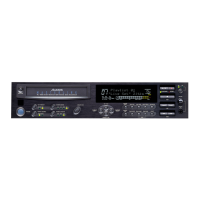
